-
 Bitcoin
Bitcoin $119000
0.17% -
 Ethereum
Ethereum $3664
-2.12% -
 XRP
XRP $3.229
-7.77% -
 Tether USDt
Tether USDt $1.001
0.02% -
 BNB
BNB $783.2
-1.48% -
 Solana
Solana $191.3
-5.26% -
 USDC
USDC $1.000
0.03% -
 Dogecoin
Dogecoin $0.2450
-7.74% -
 TRON
TRON $0.3115
-1.61% -
 Cardano
Cardano $0.8229
-6.80% -
 Hyperliquid
Hyperliquid $44.17
-2.93% -
 Stellar
Stellar $0.4343
-7.23% -
 Sui
Sui $3.792
-4.09% -
 Chainlink
Chainlink $18.38
-5.73% -
 Hedera
Hedera $0.2491
-7.79% -
 Bitcoin Cash
Bitcoin Cash $518.1
-1.51% -
 Avalanche
Avalanche $24.13
-5.84% -
 Litecoin
Litecoin $113.9
-5.41% -
 UNUS SED LEO
UNUS SED LEO $8.974
-0.21% -
 Shiba Inu
Shiba Inu $0.00001400
-7.98% -
 Toncoin
Toncoin $3.215
-2.09% -
 Ethena USDe
Ethena USDe $1.001
0.03% -
 Polkadot
Polkadot $4.178
-6.84% -
 Uniswap
Uniswap $10.38
-3.05% -
 Monero
Monero $317.8
-1.85% -
 Bitget Token
Bitget Token $4.733
-1.94% -
 Pepe
Pepe $0.00001293
-8.20% -
 Dai
Dai $1.000
0.02% -
 Aave
Aave $292.8
-4.74% -
 Bittensor
Bittensor $430.1
-3.67%
How to liquid stake ETH?
Liquid staking lets ETH holders earn rewards while keeping funds liquid, offering flexibility through tokens like stETH or rETH that work across DeFi platforms.
Jul 20, 2025 at 02:14 pm
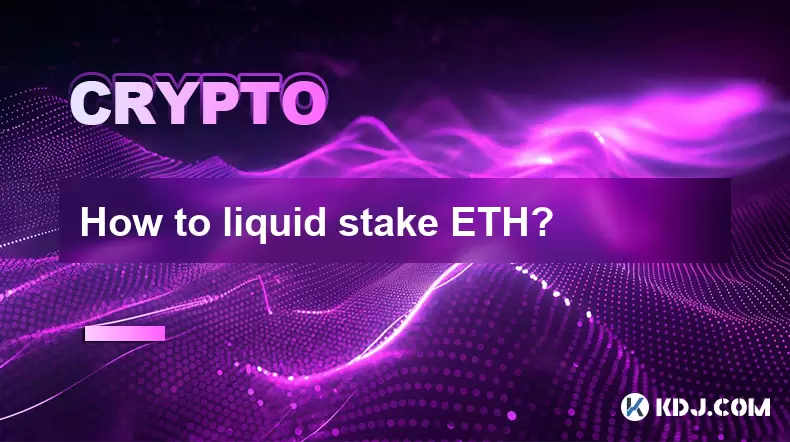
What Is Liquid Staking for ETH?
Liquid staking refers to a process that allows users to stake their Ethereum (ETH) while still retaining liquidity. Traditionally, when users stake ETH, their funds are locked up until a future Ethereum network upgrade allows for withdrawals. Liquid staking solves this issue by issuing liquid tokens in exchange for the staked ETH, which can be freely traded, used in DeFi protocols, or transferred.
This innovation is particularly valuable for ETH holders who want to earn staking rewards but don’t want to sacrifice the flexibility of using their assets elsewhere in the crypto ecosystem.
Why Choose Liquid Staking Over Traditional Staking?
One of the main drawbacks of traditional staking is that your ETH is illiquid until the Ethereum network upgrade enables withdrawals. With liquid staking, users receive receipt tokens (like stETH, rETH, or sETH2) that represent their staked ETH and accrued rewards. These tokens can be used across decentralized finance (DeFi) platforms for yield farming, lending, or trading.
This flexibility allows users to maximize capital efficiency while still participating in Ethereum’s proof-of-stake consensus. It also lowers the entry barrier for smaller investors who may not meet the minimum staking requirements of 32 ETH for running a validator node.
Popular Platforms for Liquid Staking ETH
Several platforms offer liquid staking services for Ethereum, each with its own tokenization model and fee structure:
- Lido Finance: The most popular liquid staking platform, Lido issues stETH tokens in exchange for staked ETH. It supports non-custodial staking and offers integration with major DeFi protocols.
- Rocket Pool: A decentralized alternative that issues rETH. It allows users to stake as little as 0.01 ETH and offers lower fees compared to Lido.
- Stakewise: Offers sETH2 tokens and supports both on-chain and off-chain staking. It also allows users to pool their ETH and optimize rewards.
Each platform operates with smart contracts and distributes staking rewards proportionally to token holders.
Step-by-Step Guide to Liquid Stake ETH
- Ensure you have ETH in a compatible wallet like MetaMask, Trust Wallet, or WalletConnect.
- Navigate to the liquid staking platform of your choice (e.g., Lido, Rocket Pool).
- Connect your wallet to the platform’s dApp interface.
- Enter the amount of ETH you wish to stake.
- Confirm the transaction in your wallet.
- Wait for the transaction to be processed on the Ethereum blockchain.
- Receive your liquid staking tokens (e.g., stETH, rETH) in your wallet.
These tokens will continue to accrue staking rewards over time and can be used in various DeFi applications to earn additional yields.
How to Use Liquid Staking Tokens in DeFi
Once you’ve received your liquid staking tokens, you can use them in several DeFi protocols:
- Provide liquidity on platforms like Curve Finance or Balancer to earn trading fees.
- Deposit into lending protocols like Aave or Compound to earn interest.
- Use them as collateral to borrow other assets or leverage your position.
It’s important to assess the risks involved, such as smart contract vulnerabilities, impermanent loss, and token volatility before engaging in DeFi activities with your liquid staking tokens.
Security Considerations and Risks
While liquid staking offers increased flexibility, it also comes with certain risks:
- Smart contract risk: Since liquid staking relies on third-party smart contracts, there’s always a chance of bugs or exploits.
- Centralization risk: Some platforms may centralize validator operations, which could undermine Ethereum’s decentralization.
- Slashing risk: If a validator misbehaves, a portion of the staked ETH may be slashed, affecting token value.
- Token depeg: In extreme market conditions, liquid staking tokens may trade below their ETH value, causing losses.
Users should always do thorough research and consider diversifying across platforms to mitigate these risks.
Frequently Asked Questions (FAQs)
Q: Can I unstake my ETH from a liquid staking platform at any time?
No, you cannot immediately unstake your ETH. You must wait for the Ethereum network upgrade that enables withdrawals or use a secondary market to sell your liquid staking tokens.
Q: Are liquid staking tokens taxable?
Yes, depending on your jurisdiction, both the receipt of liquid tokens and any yield generated may be considered taxable events. Consult a tax professional for guidance.
Q: Is liquid staking safer than running a validator node?
It depends on your technical expertise and risk tolerance. Liquid staking removes the operational burden of managing a validator but introduces third-party risk. Running a validator gives you full control but requires technical knowledge and 32 ETH.
Q: Can I use liquid staking tokens on multiple blockchains?
Some platforms have bridged versions of their tokens on Layer 2 networks or other blockchains. Always check the token standard and network compatibility before transferring.
Disclaimer:info@kdj.com
The information provided is not trading advice. kdj.com does not assume any responsibility for any investments made based on the information provided in this article. Cryptocurrencies are highly volatile and it is highly recommended that you invest with caution after thorough research!
If you believe that the content used on this website infringes your copyright, please contact us immediately (info@kdj.com) and we will delete it promptly.
- XRP, Solana, and Institutional Adoption: A New Era for Crypto?
- 2025-07-24 11:10:12
- Dogecoin, Remittix, and Crypto Protocols: The Evolution of Digital Finance
- 2025-07-24 10:50:12
- BlockDAG, Hedera, and Stellar: Charting the Course for Crypto's Future
- 2025-07-24 10:50:12
- BlockDAG's No-Vesting Edge: Can It Outpace Cardano's Price?
- 2025-07-24 11:10:12
- South Korea's Credit Card Industry Embraces Stablecoin Regulations: A New Era?
- 2025-07-24 10:30:12
- Bitcoin, SHIB, and Institutional Momentum: Decoding Crypto's 2025 Trajectory
- 2025-07-24 11:15:12
Related knowledge
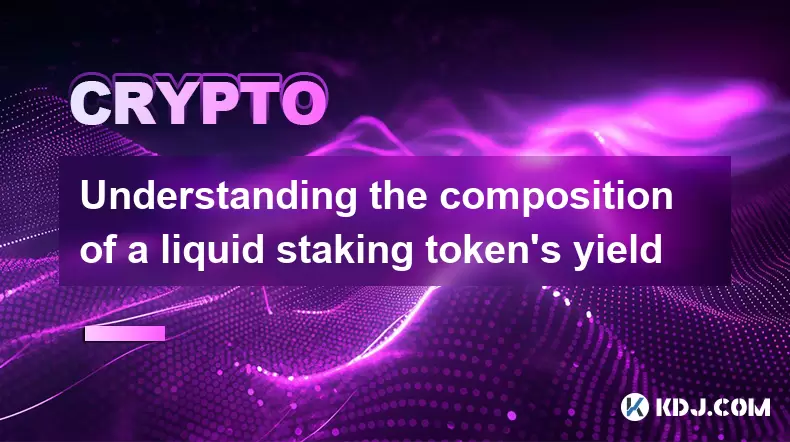
Understanding the composition of a liquid staking token's yield
Jul 20,2025 at 09:07am
What Is a Liquid Staking Token?A liquid staking token is a representative asset issued to users who stake their native cryptocurrency on a proof-of-st...
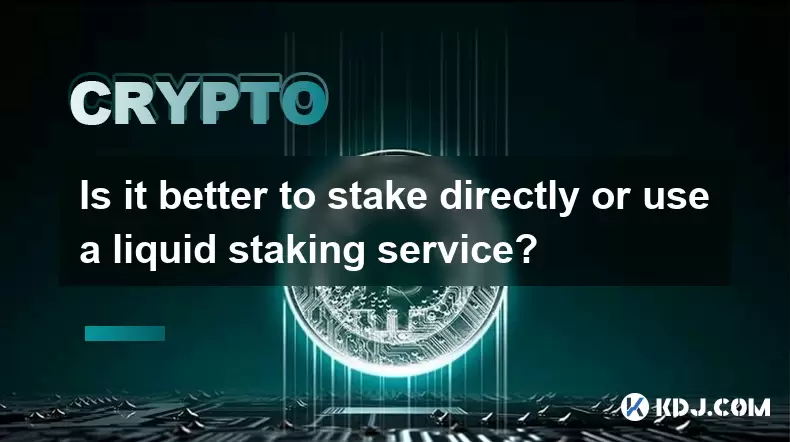
Is it better to stake directly or use a liquid staking service?
Jul 22,2025 at 08:21pm
Understanding the Basics of StakingStaking in the context of blockchain and cryptocurrency refers to the process of locking up digital assets to suppo...

What to do during an LST depeg event
Jul 20,2025 at 04:57pm
Understanding LST Depeg EventsAn LST (Liquid Staking Token) depeg event occurs when the token, which is typically pegged to the value of the underlyin...
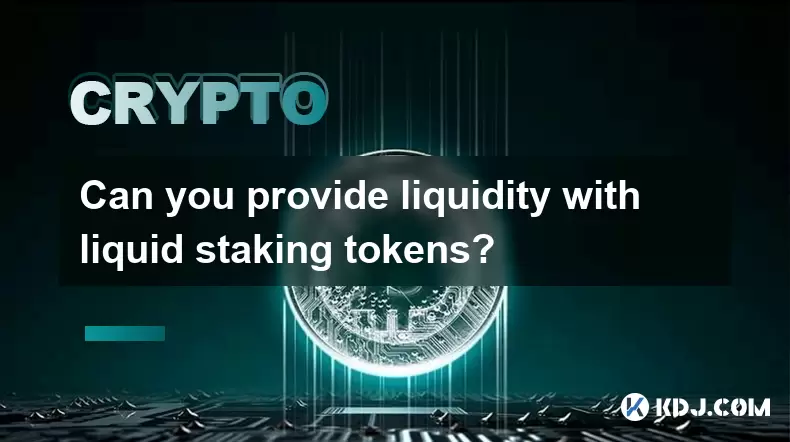
Can you provide liquidity with liquid staking tokens?
Jul 22,2025 at 10:22am
Understanding Liquid Staking TokensLiquid staking tokens (LSTs) are derivative tokens that represent staked assets on a proof-of-stake (PoS) blockchai...

What are the best wallets for storing LSTs?
Jul 21,2025 at 03:14pm
Understanding LSTs and the Need for Secure StorageLSTs, or Liquid Staking Tokens, are derivative tokens representing staked assets on a blockchain. Wh...
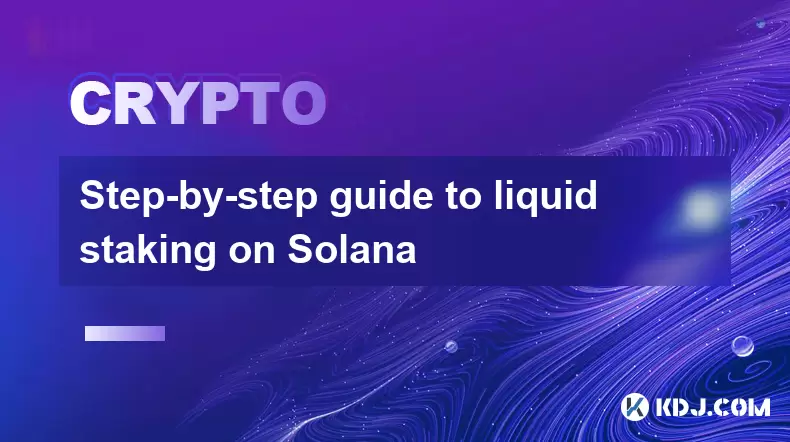
Step-by-step guide to liquid staking on Solana
Jul 20,2025 at 06:42am
What is Liquid Staking on Solana?Liquid staking is a mechanism that allows users to stake their cryptocurrency while retaining liquidity through the i...

Understanding the composition of a liquid staking token's yield
Jul 20,2025 at 09:07am
What Is a Liquid Staking Token?A liquid staking token is a representative asset issued to users who stake their native cryptocurrency on a proof-of-st...

Is it better to stake directly or use a liquid staking service?
Jul 22,2025 at 08:21pm
Understanding the Basics of StakingStaking in the context of blockchain and cryptocurrency refers to the process of locking up digital assets to suppo...

What to do during an LST depeg event
Jul 20,2025 at 04:57pm
Understanding LST Depeg EventsAn LST (Liquid Staking Token) depeg event occurs when the token, which is typically pegged to the value of the underlyin...

Can you provide liquidity with liquid staking tokens?
Jul 22,2025 at 10:22am
Understanding Liquid Staking TokensLiquid staking tokens (LSTs) are derivative tokens that represent staked assets on a proof-of-stake (PoS) blockchai...

What are the best wallets for storing LSTs?
Jul 21,2025 at 03:14pm
Understanding LSTs and the Need for Secure StorageLSTs, or Liquid Staking Tokens, are derivative tokens representing staked assets on a blockchain. Wh...

Step-by-step guide to liquid staking on Solana
Jul 20,2025 at 06:42am
What is Liquid Staking on Solana?Liquid staking is a mechanism that allows users to stake their cryptocurrency while retaining liquidity through the i...
See all articles

























































































